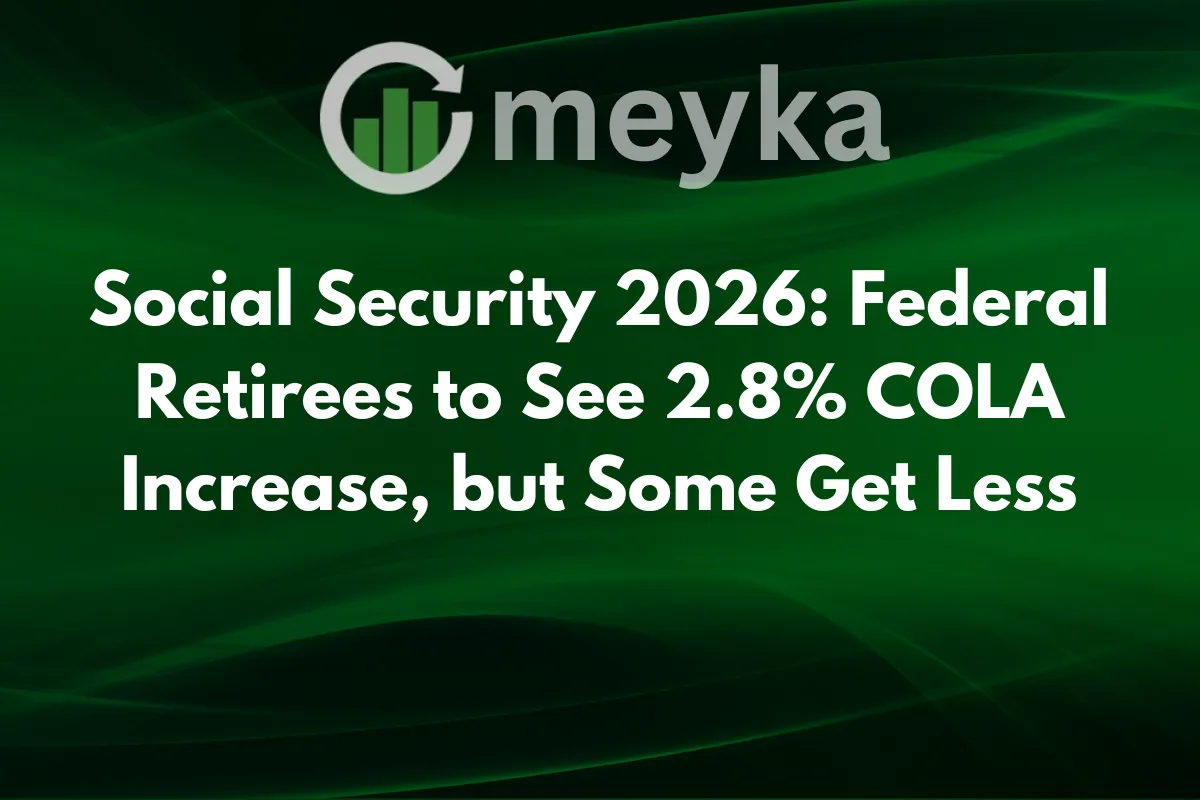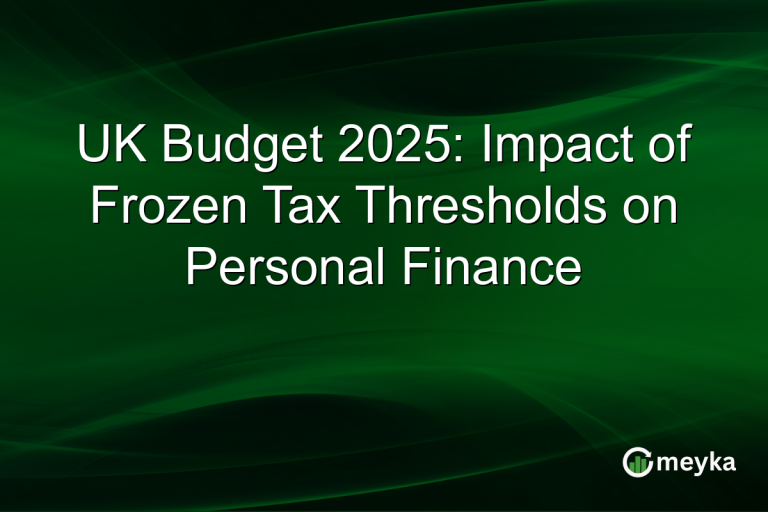(SSI) Social Security Cola 2026: Federal Retirees to See 2.8% COLA Increase, but Some Get Less
Social Security 2026 adjustments are set to deliver a 2.8% Cost-of-Living Adjustment (COLA) for millions of beneficiaries across the United States. However, not all federal retirees will see the same level of increase. While this adjustment aims to help retirees maintain their purchasing power amid rising prices, some will receive smaller benefits due to calculation differences within federal retirement systems.
Understanding the 2026 COLA: What the 2.8% Increase Means
The 2.8% COLA for Social Security 2026 reflects the government’s effort to offset inflation. The adjustment is determined by the Consumer Price Index for Urban Wage Earners and Clerical Workers (CPI-W), comparing the third quarter of 2025 to the same period in 2024.
This percentage ensures Social Security payments rise in line with cost increases for everyday needs like food, fuel, and healthcare. For the average retiree, this means an increase of around $58 per month, depending on benefit levels.
However, federal retirees under different pension systems will see varying increases, making the outcome less uniform across the board.
Federal Retirees and the Two-Tier System
The federal retiree community is divided between two major systems — Civil Service Retirement System (CSRS) and Federal Employees Retirement System (FERS). Each system uses a different formula to calculate COLA adjustments.
CSRS Retirees: Full COLA Adjustment
Those under the CSRS plan will receive the full 2.8% increase in 2026. This system covers employees hired before 1984, and their retirement benefits mirror traditional pension structures. Since CSRS retirees are not typically eligible for Social Security, they rely heavily on annual COLA increases to maintain income stability.
FERS Retirees: Reduced COLA Impact
FERS retirees, on the other hand, will receive a smaller increase. When inflation exceeds 2%, the FERS COLA is reduced by 0.5 percentage points. Therefore, in 2026, they’ll see only a 2.3% increase instead of the full 2.8%.
This reduction affects retirees who rely on smaller government pensions, often supplemented by partial Social Security payments. For many, that half-percent difference could represent hundreds of dollars annually in lost income growth.
Why Some Federal Retirees Get Less Than Others
The COLA gap between CSRS and FERS retirees stems from how these systems were designed. CSRS provides a stand-alone benefit not tied to Social Security, while FERS integrates with it.
Lawmakers structured FERS with smaller pension benefits, assuming retirees would make up the difference with Social Security and Thrift Savings Plan (TSP) income. To prevent over-adjustment, the COLA reduction rule was added when inflation exceeds 2%.
In practice, this means FERS retirees often lag behind inflation, especially in years with steep price increases.
How the 2026 COLA Compares to Previous Years
The Social Security 2026 COLA marks a slowdown compared to recent years. In 2025, retirees received a 3.2% increase, and in 2024, it was 3.4%. The high inflation spikes of 2022 and 2023 led to record adjustments of 8.7% and 5.9%, respectively.
This year’s 2.8% suggests inflation has moderated, but many retirees still face rising costs for essentials. Even with the increase, monthly checks may not fully keep up with healthcare expenses, which continue to grow faster than average inflation rates.
The Real Impact on Retirees’ Monthly Budgets
For most retirees, the COLA increase means a modest improvement in take-home income. A retiree receiving $2,000 per month would see a $56 increase, while someone earning $3,000 monthly would gain $84.
However, higher Medicare Part B premiums could offset some of these gains. The Centers for Medicare & Medicaid Services is expected to raise premiums again in 2026, limiting the actual benefit of the COLA increase.
This dynamic highlights the delicate balance retirees face. While Social Security 2026 provides relief, it may not be enough to offset the rising cost of living fully.
Regional Impact: How the 2026 COLA Affects Retirees in the U.S., U.K., and Australia
Although Social Security 2026 is primarily a U.S. program, its implications extend to retirees living abroad, especially in the United Kingdom and Australia.
American retirees residing overseas will still receive their COLA increase, but local inflation rates and currency fluctuations could influence how far that money stretches. In countries like the U.K. and Australia, where living costs have also increased, the value of the U.S. dollar may vary, thereby reducing real purchasing power.
Why Cost-of-Living Adjustments Matter More Than Ever
The purpose of the COLA is to help retirees keep up with inflation. Without these annual increases, retirees would lose purchasing power every year. Over a decade, even small differences can significantly erode income value.
For example, a retiree with a $2,000 monthly benefit and no COLA would lose over $400 in real value per month after 10 years, assuming a 2% inflation rate. The 2.8% COLA for 2026 helps slow this erosion, though it doesn’t eliminate it entirely.
Preparing for the Future: What Federal Retirees Should Expect Beyond 2026
Experts predict that COLA adjustments in the coming years will remain between 2% and 3%, assuming inflation stays moderate. However, any economic shock, such as a rise in energy prices or new global conflicts, could alter these estimates.
Federal retirees are encouraged to plan conservatively, considering inflation and potential healthcare cost increases. While the Social Security 2026 adjustment offers temporary relief, retirees must continue managing savings carefully to maintain long-term financial security.
Conclusion:
The Social Security 2026 COLA of 2.8% offers modest relief to millions of retirees facing ongoing inflation. Yet for many federal retirees, especially under FERS, the reduced 2.3% adjustment highlights the unequal impact of these annual increases.
While the rise helps maintain purchasing power, it may not fully offset the costs of housing, healthcare, and everyday living. Federal retirees must continue planning carefully, balancing their pensions, savings, and Social Security income to safeguard their financial well-being in the years ahead.
Frequently Asked Questions (FAQs) About Social Security 2026
The Social Security 2026 Cost-of-Living Adjustment (COLA) is 2.8%, effective from January 2026.
Federal retirees under the FERS system will receive a 2.3% increase, not 2.8%, due to the system’s formula that reduces COLA when inflation exceeds 2%.
Retirees will see the new benefit amounts in their January 2026 payments.
Yes, it applies to all Social Security recipients, including retired workers, survivors, and disabled beneficiaries.
Yes, higher Medicare Part B premiums could reduce the net benefit of the COLA for some retirees.
Disclaimer:
The content shared by Meyka AI PTY LTD is solely for research and informational purposes. Meyka is not a financial advisory service, and the information provided should not be considered investment or trading advice.






